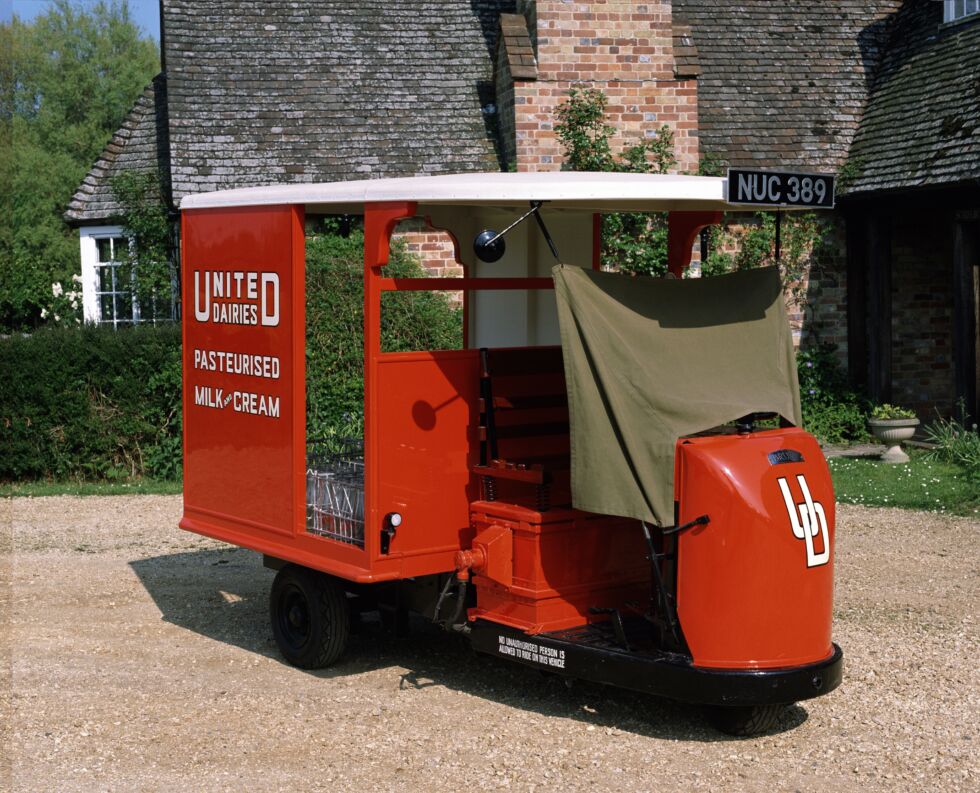
Electric delivery vehicles are big business. These "last-mile" solutions from companies like UPS and Amazon are a way around restrictions on freight vehicle emissions in cities and provide green credentials at the point where customers interact with a service.
In Europe, electric van sales went up 74 percent over the first five months of 2023, with EV powertrains becoming the second-favorite propulsion behind diesel, leapfrogging gasoline. Delivery EV production is massively accelerating as companies head toward 2025 commitments for fleet transformation and Ford and Stellantis bring more vehicles to market. Nissan has even been using Nikola battery-electric heavy-duty car transports to deliver Ariyas to customers in California.
But these electric delivery vehicles not especially new. In fact, a very significant proportion of electric road vehicles for most of the 20th century were working in suburbs, small towns, and villages in the UK as "milk floats."
Low-powered, slow, and silent, the British milk float was the most common electric road vehicle for most of the 20th century, until the demise of morning milk deliveries. Some other utility EVs, like electric forklifts (invented in 1923) or golf carts, have outnumbered them worldwide, but they were never intended to be driven alongside cars.
You bring me milk each morning?

Anyone old enough to remember milk floats in Britain will know them as trundling vehicles that were the bane of morning commutes, impossible to pass thanks to the flatbeds that made them just long enough to be a moving obstacle. But they were also an institution. According to a 2017 Independent article, there were 1,200 being made a year. Most milk floats on the roads must have been pushing 10 years old, so that tells you how in-demand they were.
Sources vary wildly concerning when the first electric delivery vehicles started being used. It sounds absurd now, but at the early stages of automobile manufacturing, many people didn’t care too much about the stuff they invented—in 1839, Robert Davidson displayed what was likely the first electric car in London, then disassembled it weeks later. Breakthroughs were ten-a-penny back then, even allowing for inflation.
But this sort of flatbed, not-a-truck, not-yet-a-van kind of vehicle for deliveries didn't actually come from England. It was probably popularized in the US, where early EV infrastructure was a lot better than in the UK. The Walker Vehicle Company was making small commercial vehicles in Chicago and Detroit from 1907 to 1942.
Post-World War II electric vehicles really took a downturn in convenience compared to their petrol-powered counterparts. But the electric milk float, which was introduced to replace horse-drawn counterparts from 1932 onward, had some significant advantages over gas-powered vehicles.
First, unlike early gas cars, the electric milk float was a lot quieter. Secondly, stopping and starting them wasn’t an issue thanks to the electric brush motors not needing an unreliable early clutch and starter.
reader comments
204